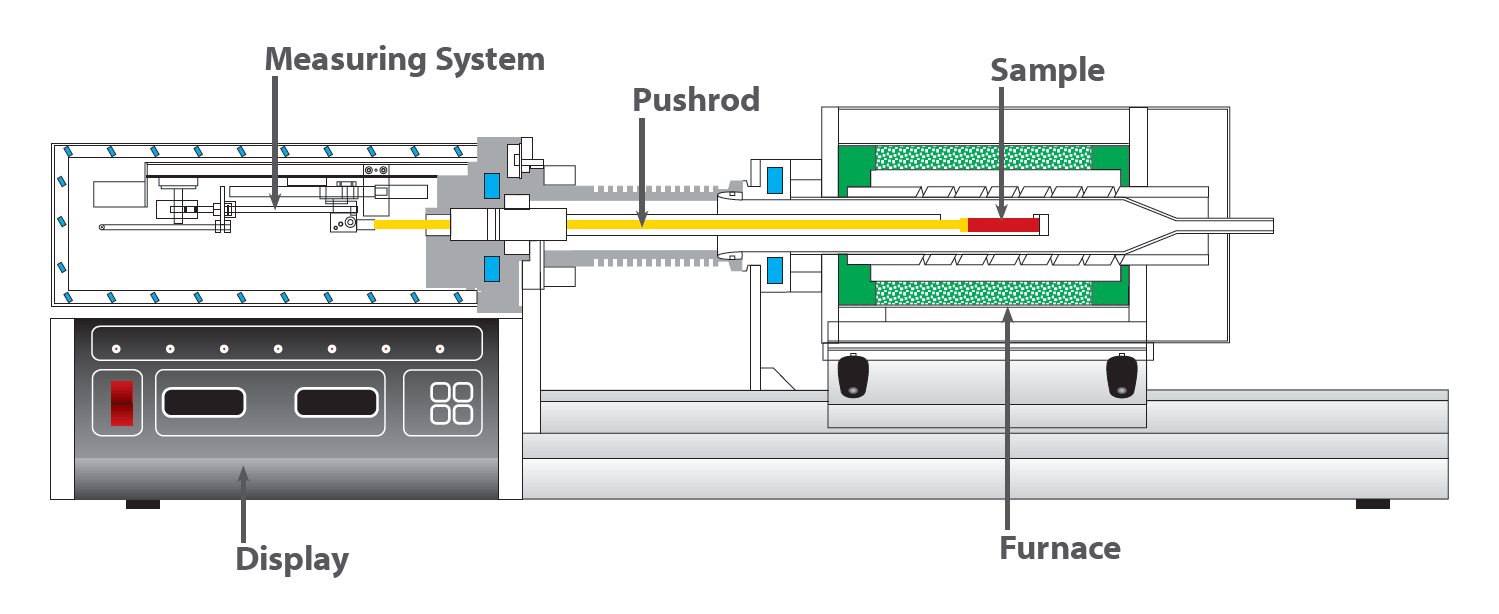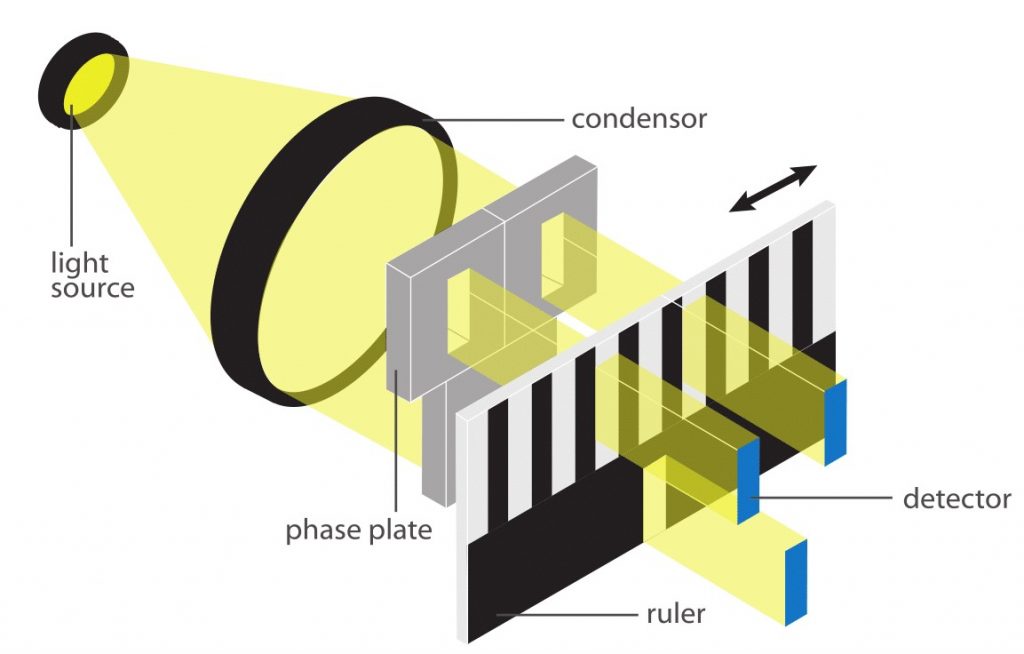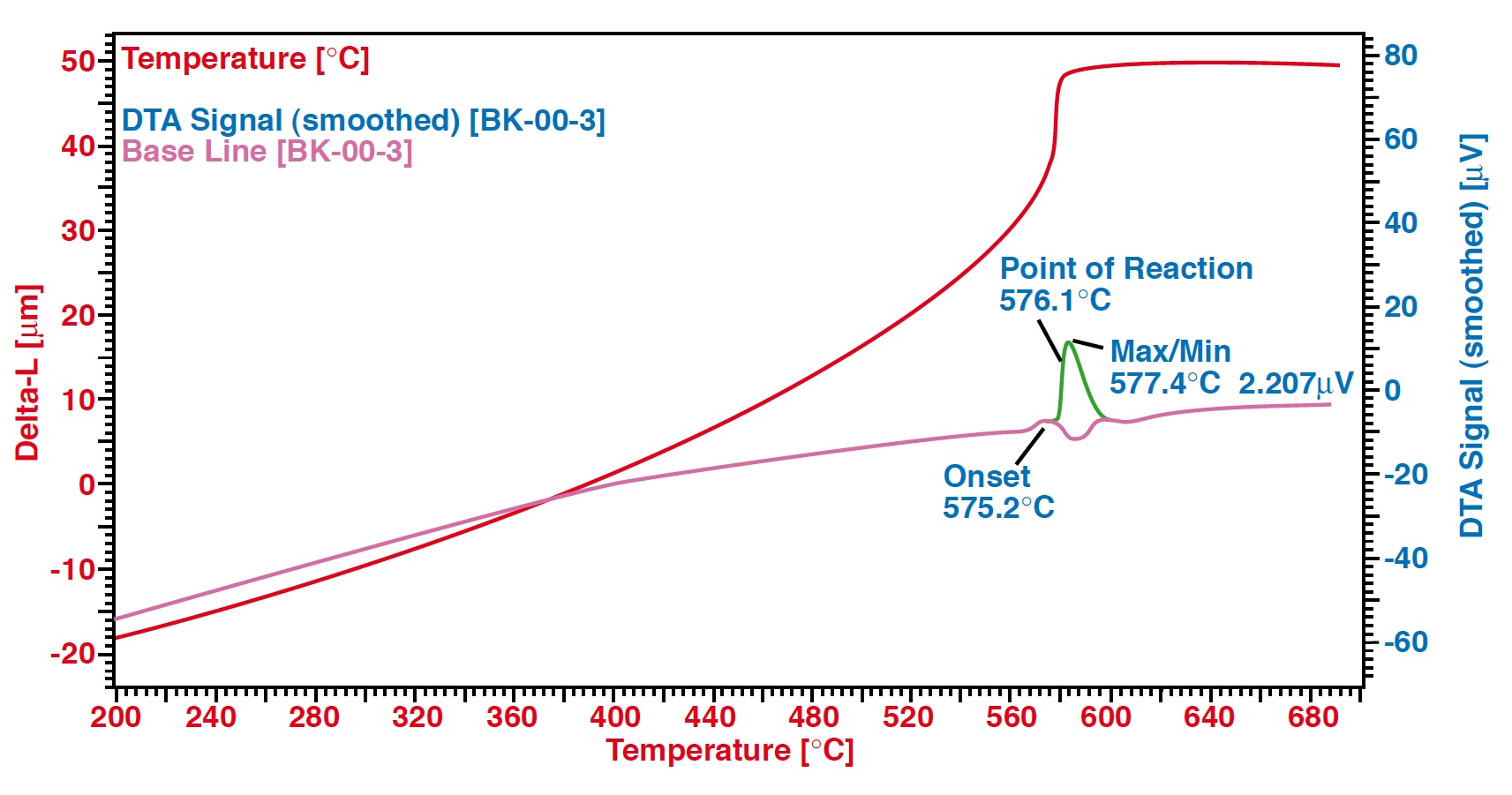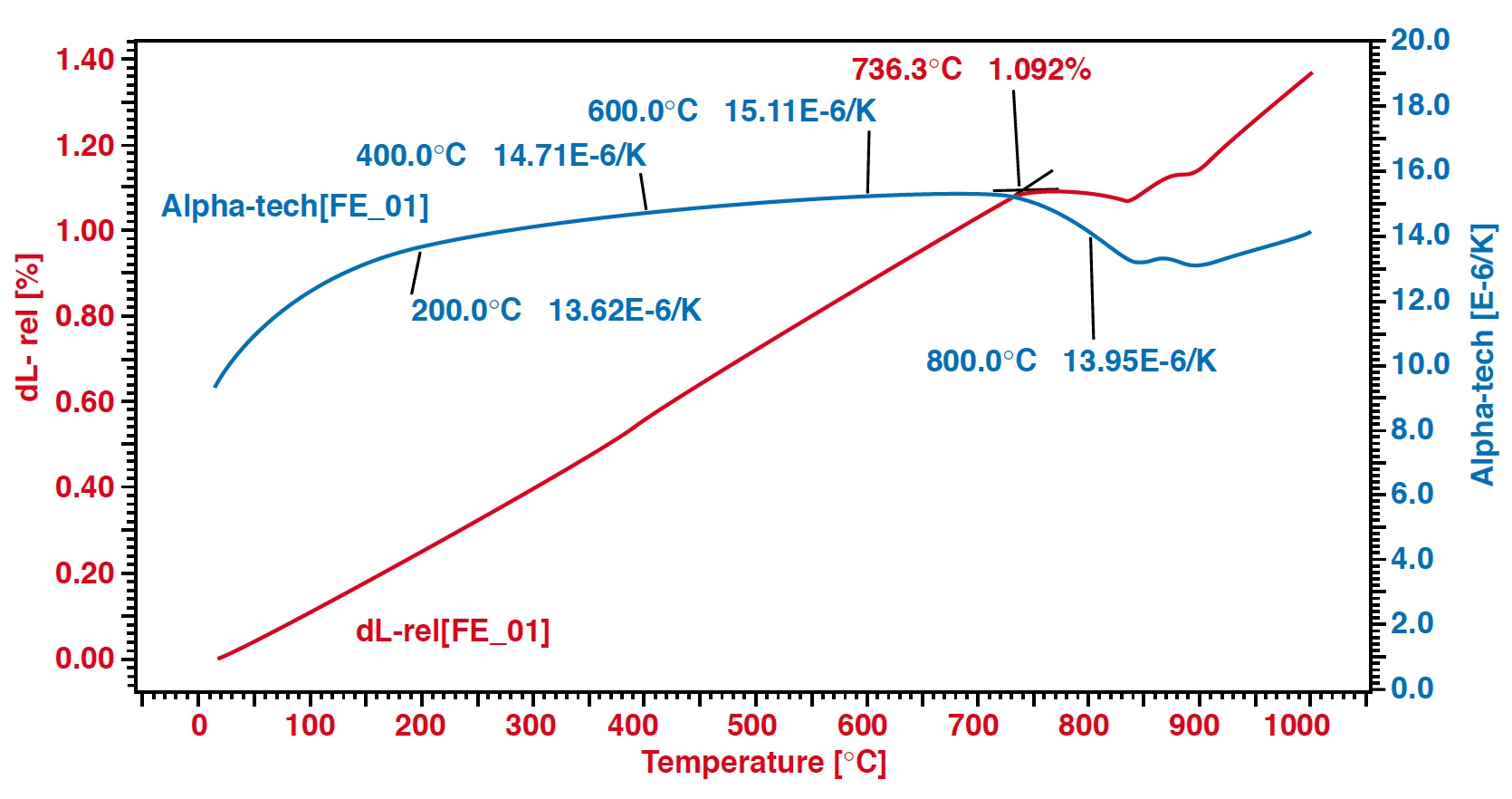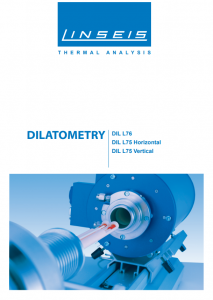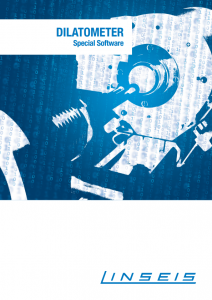DIL L75 PT Horizontal
Research Dual- and Differential Dilatometer series
Description
On point
The horizontal dilatometer DIL L75 H was developed to meet the demands of the academic community and research laboratories worldwide. With this system, thermal expansion behavior of solids, liquids, powders and pastes for a variety of applications can be precisely determined. The unique design of this system guarantees highest precision, reproducibility and accuracy. This line of instruments is capable of performing measurements under vacuum, oxidizing and reducing atmospheres.
This system can be ordered in a single, dual or differential version for even higher precision or sample throughput. Optionally the mechanical and electronic components of the dilatometer can be separated to allow measurements in a glove box.
With our automatic pressure control, the contact pressure can be continuously varied between 10 and 1000 mN, depending on the application. This feature continuously controls the selected contact pressure throughout expansion and/or shrinkage of the sample.
The following physical properties can be measured:
- CTE
- Linear Thermal Expansion
- Alpha Physical
- Sintering Temperature
- Phase Transformations
- Softening Points
- Decomposition Temperatures
- Glass Transition Temperatures
You are interested in a dilatometer?
You need more information?
Contact our application experts!
Specifications
Black and white
| Model | DIL L75 H* |
|---|---|
| Temperature range: | -180 up to 2800°C |
| Price range: | $$ |
| LVDT: | |
| Delta L resolution: | 0,03 nm |
| Measuring range: | +/- 2500 µm |
| Contact force: | 10 mN up to 1 N |
| Optical Encoder: | |
| Delta L resolution: | 0,1 nm |
| Measuring range: | +/- 25000 µm |
| Automatic sample length detection: | yes |
| Kraftmodulation: | yes |
| Force modulation: | yes |
| Contact force: | 10 mN up to 5N |
| Multiple furnace configuration: | up to 2 furnaces |
| Motorized furnace operation: | optional |
| – (Unsichtbar, siehe EXTRA CLASS NAME unten) – | – (Unsichtbar, siehe EXTRA CLASS NAME unten) – |
|---|---|
| Gas dosing: | manual gas dosing or mass flow controller 1/3 or more gases |
| Contact force adjustment: | included |
| Single/double dilatometer: | optional |
| Softening point detection: | included |
| Density determination: | included |
| L-DTA: | optional (up to 2000°C) |
| Rate controlled sintering (RCS): | included |
| Thermal library: | included |
| Electric thermostatization of measuring head: | included |
| Low temperature options: | LN2, Intra |
| Vacuum tight design: | yes |
| Automatic evacuation system: | optional |
| OGS oxygen getter system: | optional |
*Specs depend on configurations
Furnaces
| Temperature | Type | Heating element | Atmosphere | Temperature sensor |
|---|---|---|---|---|
| -180 – 500°C | L75/264 | Thermo coax | inert, oxid., red., vac. | Type K |
| -180 – 700°C | L75/264/700 | Thermo coax | inert, oxid., red., vac. | Type K |
| -180 up to 1000 | L75/264/1000 | Thermo coax | inert, oxid., red., vac. | Type K |
| RT – 1000°C | L75/220 | Kanthal | inert, oxid., red., vac. | Type K |
| RT – 1400°C | L75/230 | Kanthal | inert, oxid., red., vac. | Type S |
| RT – 1600°C | L75/240 | SiC | inert, oxid., red., vac. | Type S |
| RT – 1650°C | L75/240 PT | Platinum | inert, oxid., red., vac. | Type S |
| RT – 2000°C | L75/260 | Graphite | N2/Vac. | Type C and/or pyrometer |
| RT – 2800°C | L75/280 | Graphite | N2/Vac. | Pyrometer |
Measuring System for DIL
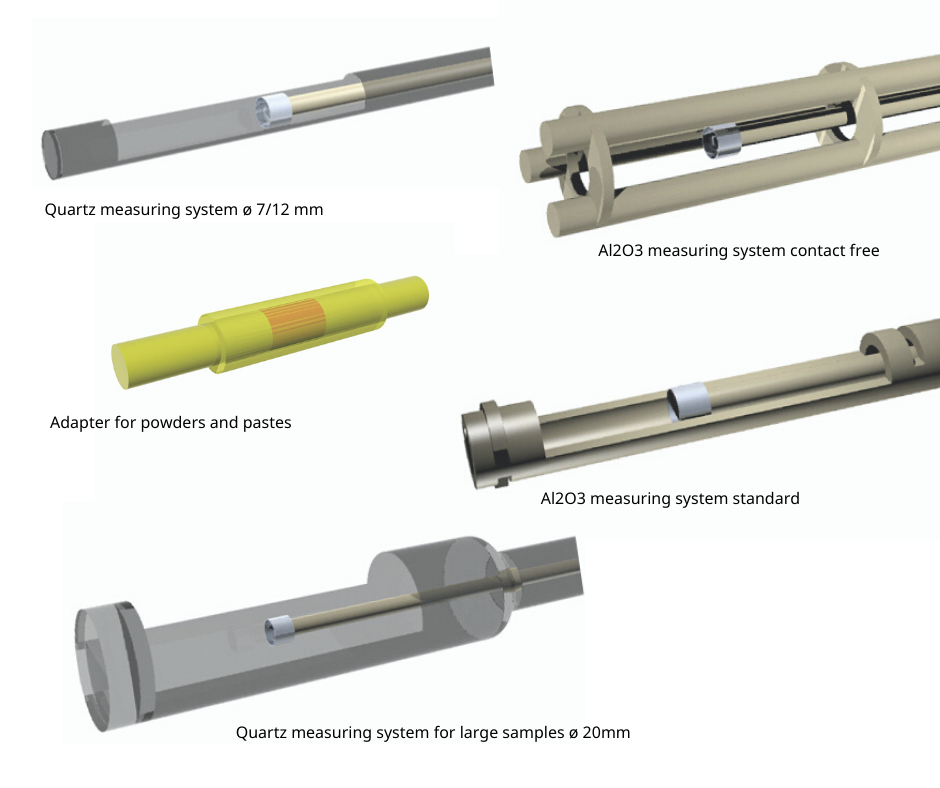
Numerous different single, double or quattro measuring systems made of fused silica, Al2O3 or graphite are available.
- Different types (designs/materials) of sample holders
- Vernier calipers for online input of the sample length
- Selection of manual, semi-automatic and automatic (MFC), Gas Boxes for up to 4 gases
- Instruments for sample preparation
- Software Option for rate controlled sintering (RCS)
- Various rotary and turbo-molecular pumps
- Possibility to operate under H2
Comparsion between LVDT and linear optical encoder
LVDT
The LVDT (Linear Variable Differential Transformer) consists out of 3 coils: the LVDT body and the movable core. The primary coil is excited by a low frequency AC voltage. The two secondary coils are put in series with reversed polarity. The horizontal position of the core defines the amount of coupling between the primary and the secondary coils.
When the core is in the center position, the induced voltages in the secondary coils have the same amplitude. Due to reversed polarity of the two coils the sum (output voltage) is zero. When the core moves, the coupling between primary and secondary coils changes. So, in one secondary coil the induced voltages increases, while in the other the voltage decreases. So, the sum of both is no longer zero. The sum of amplitude depends on the amount of movement of the core, while the phase (polarity) depends on the direction of the movement.
Advantages:
- the output signal is absolute and unique for each position, no reference movement necessary
- the core can be moved without any friction
- the resolution is infinitive, limited by the noise of the electronics used for signal conditioning
- not sensitive better suited for applications in dirty environements (gas, vacuum, dust)
Disadvantages:
- limited measuring range, e.g. +/- 2,5mm
- needs calibration
Linear Optical Encoder
A linear optical encoder uses a ruler, made of glass or metal, with a special optical pattern on it. Usually transparent and none transparent, or refl ecting and none refl ecting lines are used. A light source shines to the ruler, and the bright/dark transitions are measured. The count of measured transitions corresponds to the displacement, while the phase contribution of the two detectors A and B depends on the direction of the movement.
Advantages:
-
- no calibration necessary
- no limit of measuring range
- force modulation – offering TMA capabilities
- superior reproducibility
Disadvantages:
- the position change is measured relative, a zero position measurement for absolute position reading is necessary
- limited resolution: the lower limit for the distance of the patterns on the ruler is app 20 nm. For higher resolutions the reading must be interpolated
- the optical detector system is sensitive to dust (production environment)
Software
All LINSEIS thermo analytical instruments are PC controlled. The individual software modules exclusively run under Microsoft® Windows® operating systems. The complete software consists of 3 modules: temperature control, data acquisition and data evaluation.
The software incorporates all essential features for measurement preparation, execution, and evaluation of a Dilatometer measurement.
DIL-Features
- Glass transition and softening point evaluation
- Softening point detection with automatic software controlled system shut down
- Display of relative/absolute shrinkage or expansion curves
- Presentation and calculation of technical / physical expansion coefficient
- Rate Controlled Sintering (RCS) Software
- Sinter process evaluation
- Semiautomatic evaluation functions
- Several system correction features
- Automatic zero point adjustment
- Automatic software controlled sample pressure adjustment
General features
- Program capable of text editing
- Data security in case of power failure
- Thermocouple break protection
- Repetition measurements with minimum parameter input
- Evaluation of current measurement
- Curve comparison up to 32 curves
- Storage and export of evaluations
- Export and import of data ASCII
- Data export to MS Excel
- Multi-methods analysis (DSC TG, TMA, DIL, etc.)
- Zoom function
- 1 and 2 derivation
- Programmable gas control
- Statistical evaluation package
- Free scaling
Applications
Application example: Rock – Crystal (Calculated DTA)
The thermal expansion of rock crystal can be easily evaluated with the L75 Dilatometer. The additional DTA feature enables an in depth view of the thermal behavior of the material. The DTA measurement is a mathematical routine based on the sample temperature. Exo- and endothermic effects influence the change of the sample temperature during the dynamic heating or cooling cycle. At app. 575 °C the phase transition from takes place. The deviation of the measured temperature from the literature value (574 °C) can be used for a temperature calibration.
Application example
The linear thermal expansion (delta L) and the CTE of the sample under argon atmosphere are evaluated. The heating rate was 5 K/min. After 736.3 °C (peak temperature of CTE) shrinkage was detected, this is due to a change in the atomic structure, known as the curie-point. The difference of measured and literature result can be attributed to contamination of the sample.
External applications
On the Dissimilar Metal Welding of 1.4742 Ferritic to 310S Austenitic Stainless Steels Utilizing Different Filler Metals (published Metallography, Microstructure, and Analysis)
Coefficient of thermal expansion (CTE) study in metal matrix composite of CuSiC vs AlSiC (published IOP Conference Series: Materials Science and Engineering)
Thermal Properties of Alkali Activated Slag Plaster for Wooden Structures (published Scientific Reports)

